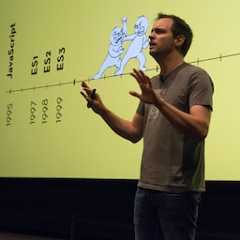Create complex animation curves in CSS with the linear() easing function
Introducinglinear(), an easing function in CSS that interpolates linearly between its points, allowing you to recreate bounce and spring effects.
Easings in CSS
When animating or transitioning elements in CSS, you control the rate at which a value changes with an easing function using theanimation-timing-function andtransition-timing-function properties.
There are several keywords available as presets in CSS, namelylinear,ease,ease-in,ease-out, andease-in-out. To create your own easing curves use thecubic-bezier() function, or take a steps based approach using thesteps() easing function.
When used appropriately, easings give an animated element a sense of weight as it appears to gather momentum.
Creating complex curves such as bounce or spring effects is not possible in CSS, but thanks tolinear() you can now approximate them astonishingly well.
An intro tolinear()
A new way to define an easing in CSS is withlinear(). This function accepts a number of stops, separated by commas. Each stop is a single number that ranges from 0 to 1. In between each stop the interpolation is done in a linear way, explaining the name of the function.
animation-timing-function:linear(0,0.25,1);These stops are by default spread equidistantly. In the preceding snippet, that means the output value of0.25 will be used at the 50% mark.
Visualized, the graph forlinear(0, 0.25, 1) looks like this:
If you don’t want the stops to be spread equidistantly, you can optionally pass in astop length. When passing in one value as a stop length, you define its starting point:
animation-timing-function:linear(0,0.2575%,1);Here, an output value of0.25 will not be used at the50% mark but at75%.
When specifying two values as a stop length, you define both its starting and ending point:
animation-timing-function:linear(0,0.2525%75%,1);An output value of 0.25 will be used from 25% to 75% in time.
Creating complex curves with linear()
While the examples above are very simple easings, you can uselinear() to recreate complex easing functions in a very simple manner, with the compromise of losing some precision.
Take this bounce easing curve, a type of easing that cannot be expressed directly in CSS, defined using #"no" dir="ltr" is-upgraded syntax="JavaScript">functioneasing(pos){constt=7.5625;conste=2.75;returnpos <1/e?t*pos*pos:pos <2/e?t*(pos-=1.5/e)*pos+0.75:pos <2.5/e?t*(pos-=2.25/e)*pos+0.9375:t*(pos-=2.625/e)*pos+0.984375;}
While the code might not tell you much, a visualization might. Here’s the output, visualized as a blue curve:
The curve can be simplified by adding a number of stops onto it. Here, each green dot indicates a stop:
When passed intolinear(), the result is a curve that kinda looks like the original one, but is a bit rougher on the edges.
Compare the green animated box to the blue one, you can tell it’s not as smooth.
But, if you add enough stops you can approximate the original curve quite well. Here’s an updated version:
By merely doubling the number of stops, you already get a smooth result.
The code used to animate looks like this:
animation-timing-function:linear(/* Start to 1st bounce */0,0.004,0.016,0.035,0.0639.1%,0.141,0.25,0.391,0.563,0.765,1,/* 1st to 2nd bounce */0.891,0.81345.5%,0.785,0.766,0.754,0.75,0.754,0.766,0.785,0.81363.6%,0.891,172.7%,/* 2nd to 3rd bounce */0.973,0.953,0.941,0.938,0.941,0.953,0.973,1,/* 3rd bounce to end */0.988,0.984,0.988,1);A tool to help
Manually creating this list of stops would be very cumbersome. Thankfully,Jake andAdam have createda tool to help you convert an easing curve to itslinear() counterpart.

The tool takes a JavaScript easing function or SVG curve as its input, and outputs the simplified curve usinglinear(). Use the sliders to control the number of stops you want, and their precision.
At the top-right, you can also choose one of the presets: Spring, Bounce, Simple elastic, or Material Design emphasized easing are included.
DevTools support
Available in DevTools is support to visualize and edit the result oflinear(). Click on the icon to show an interactive tooltip that lets you drag around the stops.

This DevTools feature is available in DevTools shipping with Chrome 114.
Photo byHowie Mapson onUnsplash
Except as otherwise noted, the content of this page is licensed under theCreative Commons Attribution 4.0 License, and code samples are licensed under theApache 2.0 License. For details, see theGoogle Developers Site Policies. Java is a registered trademark of Oracle and/or its affiliates.
Last updated 2023-05-25 UTC.
